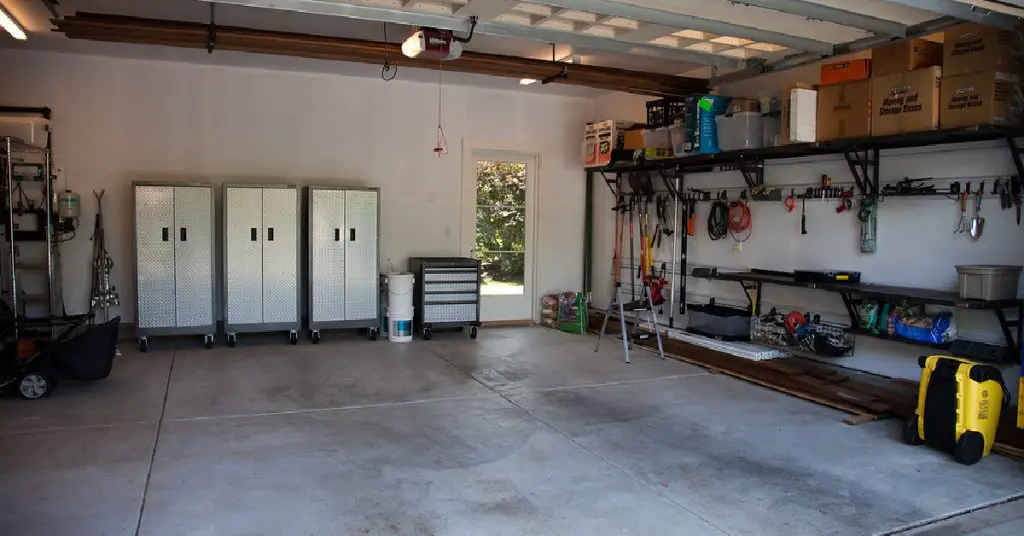Frigid temperatures can make working or spending any time in your garage downright miserable. But running new electrical wiring and installing electric heating systems isn’t always feasible. Thankfully, there are several effective methods for how to heat a garage without electricity.
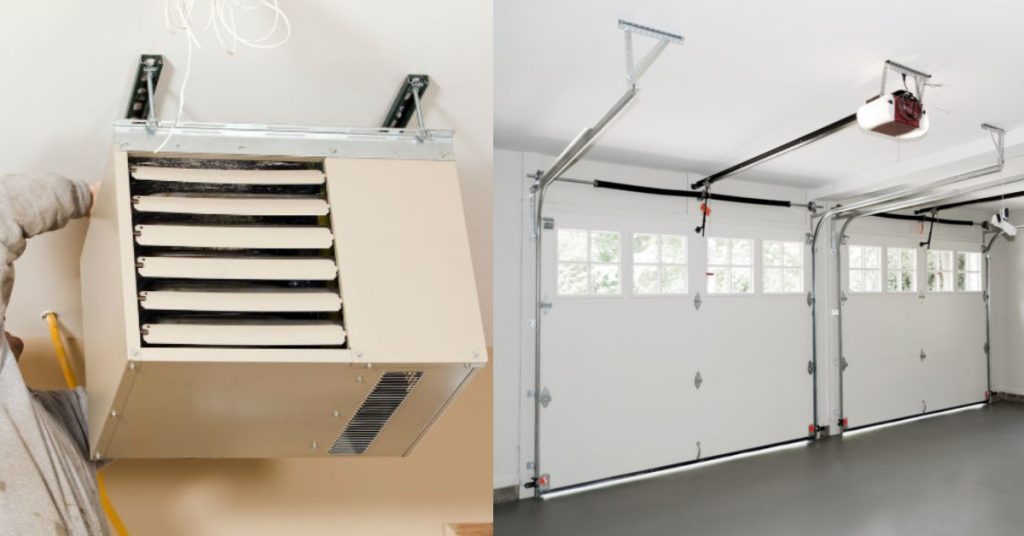
Key Takeaways:
- Calculate garage heating needs in BTUs based on size and insulation
- Top heating options: propane/kerosene heaters, wood stoves, solar thermal
- Enhance warming through insulation like batts or foam boards
- Consider operating costs and safety factors when selecting method(s)
- Creative solutions for heating garages without electricity are readily available
Why Heat Your Garage?
There are many benefits to having a warmer garage space:
- Allows you to comfortably work on hobbies, DIY projects, or vehicle maintenance year-round
- Provides a pleasant area for activities like exercising, gathering with friends, etc.
- Keeps stored items protected and safe from cold damage
- Allows pets or livestock to safely spend time there without getting too cold
- Prevents damage to vehicles from freezing winter temperatures
Calculate Your Heating Requirements
Before choosing a heating method, it’s important to calculate your garage’s heating needs based on its size and insulation level. Determining the necessary BTUs (British Thermal Units) helps properly size an appropriate non-electric heating system.
Follow these key steps:
- Measure garage interior square footage by multiplying length times width
- Divide the square footage number by 200
- Then, multiply the result of step 2:
- By 6,000 if your garage is well-insulated
- By 9,000 if your garage has poor insulation
- The final number estimates the BTU output needed to heat your garage
For reference, here are examples of small, medium, and large garage sizes:
| Garage Size | Heating Needs (Well-Insulated) | Heating Needs (Poorly-Insulated) |
|---|---|---|
| 1 car (12 x 20 ft) | 36,000 BTUs | 54,000 BTUs |
| 2 car (20 x 20 ft) | 60,000 BTUs | 90,000 BTUs |
| 3 car (30 x 30 ft) | 135,000 BTUs | 202,500 BTUs |
6 Effective Methods for How to Heat a Garage Without Electricity
Here are some of the most effective methods for how to heat a garage without electricity:
Method 1: Propane and Kerosene Space Heaters
Portable propane or kerosene space heaters provide localized warmth by burning fuel. They can quickly boost temperatures in your immediate vicinity.
Pros: Affordable, quickly heats areas, operate during power outages
Cons: Potential fumes/odors, fire risk if tipped, uneven heating
When using combustion fuel-based units, be sure to crack open garage doors and follow all safety precautions.

Method 2: Wood Stoves
Wood burning stoves produce cozy radiant warmth perfect for taking the chill out of garage air. Models designed explicitly for garage use ensure proper ventilation and clearance.
Pros: Enjoyable atmosphere, renewable fuel (wood), heat large spaces effectively
Cons: Installation complexity, regular chimney/flue cleaning
Check your local codes and home insurance policy before installing a wood stove. Proper setup is crucial.
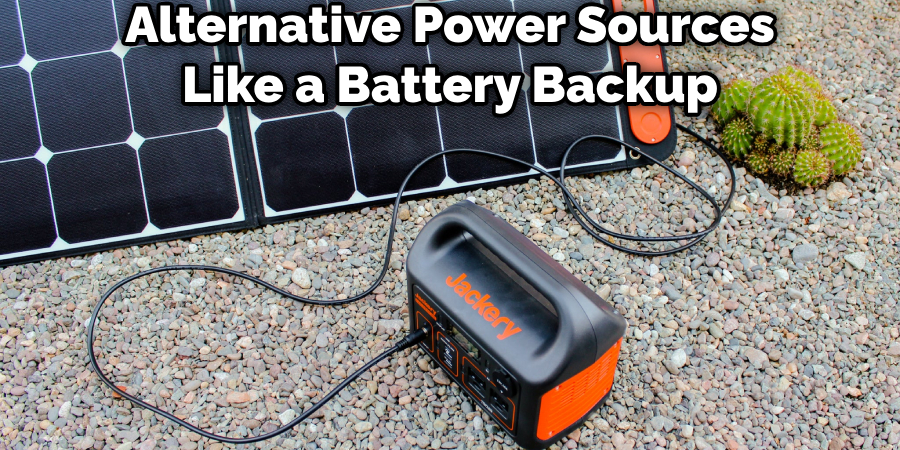
Method 3: Solar Thermal Systems
Solar thermal converts sunlight into usable heat energy. You can take a DIY approach with soda cans or use complete commercial solar heating panels.
Pros: Renewable, energy-efficient, minimal operating costs after installation
Cons: High initial investment, relies heavily on ample sunlight
Solar thermal works best paired with other methods like insulation or passive solar gain.

Method 4: Passive Thermal Techniques
Examples like mass thermal containers leverage the concept of thermal mass to capture heat when available and slowly release it over time.
Pros: Extremely affordable and uncomplicated solutions
Cons: Limited effects as the primary heat source for the whole garage
Use thermal mass barrels, water containers, or stones to supplement additional heating methods.
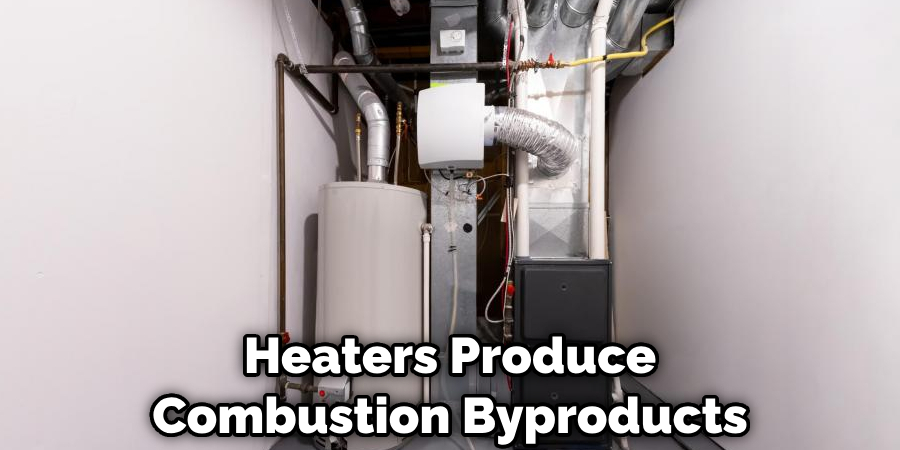
Method 5: Enhance Through Insulation
Any heating solution will perform better in a well-insulated space. Prioritizing adding insulation helps drastically reduce heat loss from your garage.
- Common insulation types: batts, rigid foam boards, spray foam
- Focus on insulating garage doors, attic, shared walls
- Caulk, seal, and weatherstrip all structural gaps
Adequate insulation means heating systems won’t have to work as hard battling cold outdoor temperatures.
Method 6: Additional Electrical Heating Options
While this article focuses on non-electric heating methods, some may wish to utilize electricity:
- Radiant heat panels mounted on the ceiling or walls
- Wall-mounted electric space heaters
- Insulated electric garage door heating mats
Carefully weigh the operating costs against the desired comfort and convenience.
You Can Check It Out to Heat a Garage for Free.
5 Additional Heating Methods
In addition to the aforementioned options, there are a few more heating methods you can consider to keep your garage warm without electricity. Let’s explore these alternative approaches:
1. Heat Lamps
Heat lamps are a practical and straightforward solution for providing localized heat in specific areas of your garage. These lamps emit focused heat, making them ideal for workbenches, workstations, or other targeted areas where you need concentrated warmth. They are typically powered by electricity but can be used sparingly or in conjunction with other non-electric heating methods.
2. Reflective Insulation
Reflective insulation, often in the form of radiant barriers, can be an effective way to retain heat in your garage. These insulating materials are designed to reflect heat into the space, preventing its escape through walls or ceilings. By installing reflective insulation panels or foil barriers, you can enhance the insulation of your garage and minimize heat loss.
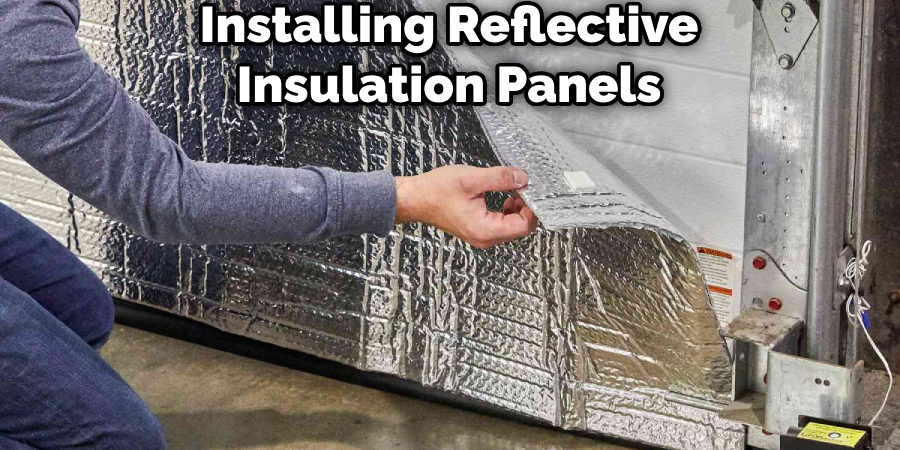
3. Solar Air Heaters
Solar air heaters harness the power of sunlight to generate heat without relying on electricity. These DIY devices utilize basic materials like 2x4s, plywood, aluminum foil, insulation, screws, nails, duct tape, and PVC pipes. By constructing a solar air heater and strategically placing it in a sun-exposed area of your garage, you can harness solar energy to warm the air, creating a sustainable and eco-friendly heating solution.
4. Non-Electric Space Heaters
Non-electric space heaters, such as gas-powered or kerosene heaters, offer another option for heating your garage. These portable heaters are designed to operate without electricity, making them suitable for off-grid situations. However, it’s crucial to prioritize safety when using these heaters. Ensure proper ventilation, follow the manufacturer’s instructions, and never leave them unattended.
5. Passive Solar Heating
Passive solar heating utilizes the sun’s energy and architectural design principles to naturally warm your garage. By strategically positioning windows or incorporating thermal mass materials like concrete or brick, you can maximize solar heat gain during the day and release it gradually during colder periods. Passive solar heating can be an effective long-term solution that reduces reliance on external heat sources.
Remember to consider your specific needs, available resources, and safety precautions when exploring these additional heating methods. Each method has its advantages and considerations, so it’s essential to choose the one that aligns best with your preferences and circumstances.
By combining different heating techniques, such as non-electric space heaters, reflective insulation, solar air heaters, and passive solar heating, you can create a customized heating system that suits your garage and lifestyle. Explore these additional methods to find the right balance of comfort, efficiency, and sustainability for your non-electric garage heating needs.
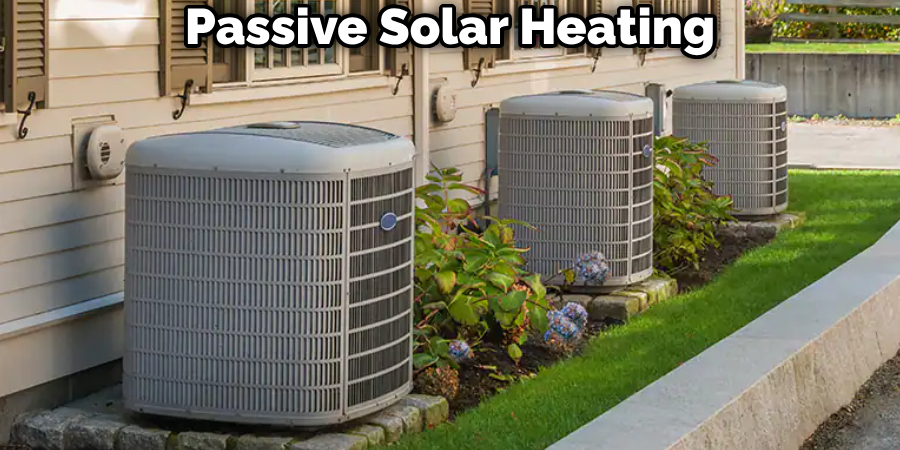
Cost-Effectiveness and Safety Considerations
When exploring various methods to heat your garage without electricity, it’s essential to consider both the cost-effectiveness and safety aspects associated with each option. Here are some important factors to keep in mind:
A. Cost-Effectiveness
- Fuel Costs: Different heating methods rely on various fuels, such as propane, natural gas, wood, or kerosene. Take into account the availability and cost of these fuels in your area. Compare prices and calculate the long-term expenses to determine the most cost-effective option for your needs.
- Efficiency: Consider the efficiency of the heating method you choose. Some options, like fuel-burning heaters, may have higher efficiency ratings than others. Look for energy-efficient models or systems that maximize heat output while minimizing fuel consumption.
- Maintenance and Upkeep: Factor in the maintenance requirements and associated costs for each heating method. Some options may require regular cleaning, fuel refills, or professional inspections. Assess the ongoing maintenance commitments to ensure they align with your budget and available resources.
B. Safety Considerations
- Ventilation: Proper ventilation is crucial when using fuel-burning heaters. Ensure that your garage has adequate airflow to prevent the buildup of potentially harmful gases, such as carbon monoxide. Install carbon monoxide detectors in your garage as an extra safety precaution.
- Fire Safety: Take necessary fire safety measures when using wood-burning stoves, pellet stoves, or other open flame heating methods. Follow manufacturer guidelines for safe installation, use fire-resistant materials, and keep flammable objects at a safe distance.
- Safety Features: Choose heating appliances that come with built-in safety features, such as tip-over switches, automatic shut-offs, or overheating protection. These features can provide an additional layer of safety and help prevent accidents or injuries.
- Compliance with Regulations: Ensure that your chosen heating method complies with local regulations and building codes. Some areas may have specific requirements for fuel-burning appliances, venting systems, or other safety considerations. Familiarize yourself with the regulations applicable to your location and adhere to them accordingly.
By carefully assessing the cost-effectiveness and safety aspects of each heating method, you can make an informed decision that aligns with your budget, heating requirements, and overall peace of mind. Remember, prioritizing safety is paramount to ensure the well-being of yourself, your family, and your property.
Always follow manufacturer instructions, consult professionals when needed, and stay vigilant about safety practices while operating any heating system in your garage.
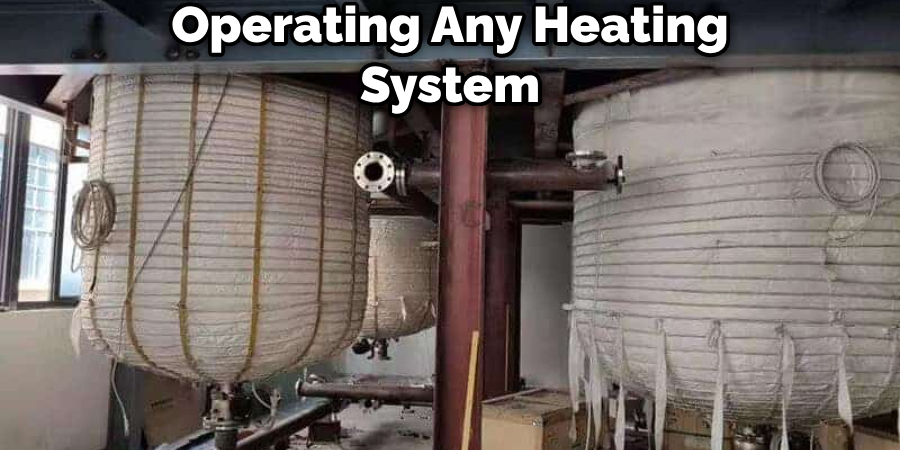
FAQs About How to Heat a Garage Without Electricity
What is a Cheap Way of Heating a Garage?
A cost-effective way to heat a garage is to insulate it with weather stripping and insulation to trap heat. Portable electric space heaters or infrared heaters can be used for spot heating, while a wood-burning stove is an economical option if wood is readily available. It’s important to ensure proper ventilation and follow safety guidelines when using any heating appliance in an enclosed space like a garage.
What is the Best Option to Heat a Garage?
The best option to heat a garage depends on various factors such as the size of the garage, local climate, and budget. However, insulating the garage and using an electric space heater or an infrared heater are commonly considered effective and efficient options. Additionally, a wood-burning stove can be a good choice if wood is readily available. It’s crucial to prioritize safety and proper ventilation when selecting a heating option for a garage.
What is the Best Way to Heat a Detached Garage?
The best way to heat a detached garage is to insulate it thoroughly to prevent heat loss. After insulating, using an electric space heater or an infrared heater for spot heating can be an effective and efficient option. Another viable choice is a wood-burning stove if wood is readily available. Prioritizing safety and ensuring proper ventilation are crucial regardless of the heating option chosen for a detached garage.
Will a Pellet Stove Heat a Garage?
Yes, a pellet stove can effectively heat a garage. Pellet stoves are known for their efficiency and can provide consistent heat. However, it’s important to ensure proper ventilation and follow safety guidelines when using a pellet stove in an enclosed space like a garage. Additionally, adequate insulation in the garage will help to maximize the effectiveness of the pellet stove.
Conclusion
Keeping your garage warm without relying on electrical heating systems requires adapting creative solutions for your needs and climate. Often the best approach combines insulation, standalone heat sources like propane or wood stoves, and supplemental solar or passive thermal techniques. With diligent preparation, even garages lacking electrical hookups can become comfortably heated multipurpose spaces their owners can utilize all winter.


